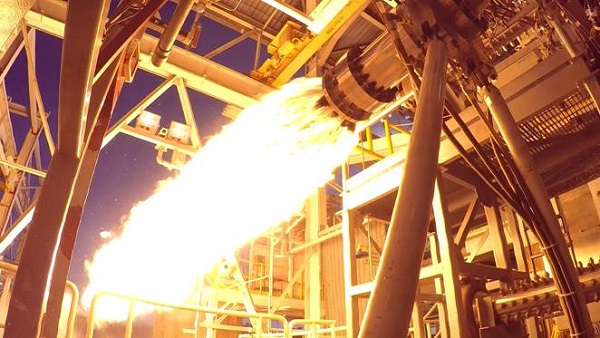Industrial Revolution was undeniably the biggest ever turning point in the history of modern humankind. The revolution started off in Europe soon spread like wildfire around the globe promoting technological growth and improving social life. The revolution had a huge impact in accelerating the advancements of humankind in the field of science and technology to reap better profits from better technology. This drive for technology drove humankind to explore new frontiers which we are continuing to this day.
Due to Industrial revolution, innovations started to happen in other fields which collectively had profound impacts on modern civilization. Factories started to produce more than ever, assembly lines and mass production became the new production method. Coupled with this, the invention of electricity-driven machines further accelerated this technological development. With human effort required in jobs getting lower, there was more time and people available for doing scientific and engineering studies.
All of this paved for mankind to explore more about our Earth and also outer space in search of answers. However, humankind didn't turn to space research just lately and the vast Cosmos has been enthralling humankind since the dawn of civilization. The earliest pioneers of rocketry dreamt of a day when humanity would burst the bubble of Earth and journey to new frontiers. We could now cross over to space, land on the moon, send probes to the edge of the solar system, all thanks to Rocketry!
This article series is a one-of-a-kind compilation of Rocketry that aims to bring the nitty-gritty details of the rockets to your fingertips. This is the starting article in the series in which we would look into the history of rocketry and the early rocket pioneers. So, buckle in, because we are going to LIFT-OFF!
WHEN DID IT START?
Even though modern rocketry has been around for only a few centuries, the earliest attempts could be traced back to early civilizations. Even though conclusive evidence is scarce, the earliest case of someone testing out the principles of rocketry comes from Greek history.
The Pigeon of ARCHYTAS (428 - 347 BC)
 |
| A portrait of Archytas from The History of Philosophy, Thomas Stanley (1655) |
Archytas was an Ancient Greek philosopher, mathematician, strategist, and many things more. He was also a member of the Pythagorean school and is known particularly for laying the foundation of Mathematical Mechanics and is also considered as the father of the same.
Aulus Gellius, a Roman writer who lived five centuries after Archytas, notes in his writings that Archytas constructed a model of a bird that was propelled using steam. This is considered to be the first artificial, self-propelled flying machine (even though conclusive evidence is scarce)
The machine he created resembled a pigeon for which Aulus Gellius says, Archytas gave the name - The Pigeon. The Pigeon is reported to have been suspended on a wire and flew for nearly 200 meters. However, with scarce evidence to prove this claim, it is not plausible to ascertain whether the flight really happened. Yet, it can be said with surety that the 'Principles of flight' was known to ancient pioneers.
Aeolipile of HERON (10 AD - 70 AD)
 |
| Heron of Alexandria from a 1688 German translation of heron's Pneumatics |
Heron or Hero was an Ancient Greek mathematician and engineer who is revered around the world for his works and experimentation. He has made tremendous contributions to geometry, mechanics, physics, and pneumatics, however, most of his works were lost to time, and very few remain.
The greatest of his contribution is unarguably the Aeolipile or Hero's engine, which is considered to be the first attempt at making an engine or turbine. Even though it was path-breaking for the time, the potential of the machine was not utilized.
Even though the exact details are scarce, it is thought to a copper vessel heated from a fire underneath. The vessel had water in it and the steam produced when the vessel heats up travels through two tubes to a hollow sphere with two protruding tubes pointed at opposite directions. When the vessel is heated, steam jets out of the two tubes creating a thrust that rotates the ball.
 | |
| An illustration of Heron's Aeolipile, Credit: Wikipedia |
Rocketry found its first major breaking point when the Chinese invented the gunpowder. Even though the exact date of the invention is disputed, it is believed to be around 300 AD. These were primarily used for fireworks and later used for warfare.
Chinese Fire Arrows (1200 AD onward)
The first gunpowder - arrow combination didn't utilize the principles of rockets as such. The early models of arrows had a pouch of gunpowder which was lit and the arrow fired at the enemy. The gunpowder either caused fires or the loud bang at the end made enemies fear and drop morale. While these arrows were used, the thrust produced by the escaping gases caused the arrows to divert from its path. This gave the Chinese the idea that they could use the escaping gases to aid the arrows to go much faster and inflict more damage, thus the first rocket was born!
 |
| A Chinese Fire Arrow from Huolongjing, Credit: Wikipedia |
After some experimentation, the first true 'rocket' arrows were fielded by the Chinese against the Mongols in the battle of Kai-Keng. The design was very rudimentary, with a bamboo filled with gunpowder aimed at the enemies and fired upon. For the Mongols fighting with basic arrows, these fire breathing arrows had a significant psychological effect.
 |
| Rightmost 'fire arrow', the middle is a 'dragon-shaped arrow frame', leftmost is a 'complete fire arrow' From Huolongjing, Credit: Wikipedia |
From the Chinese, the technology soon spread to Mongols, Korea, Japan, Middle-East, and India. By the late 1300s, the idea of rocket-powered arrows or similar weapons had spread around the Orient. However, after the invention of cannons, rockets slowly faded away from war fields. This could be attributed to the fact that cannons could inflict more damage than a rocket arrow.
However, it wasn't the end of rockets in war. Until then, European powers didn't have much clue about fielding rockets probably because they had perfected and exploited the technology of cannons, and rockets weren't seen as a powerful enough weapon for war. But this concept was about to change soon. Something happened in the 18th century which made them rethink and had huge implications on modern rocketry.
Can you guess where the incident happened!?
About that in our next article. Stay Tuned!







2 Comments
Nice....
ReplyDeleteTippu sultan rockets
ReplyDelete